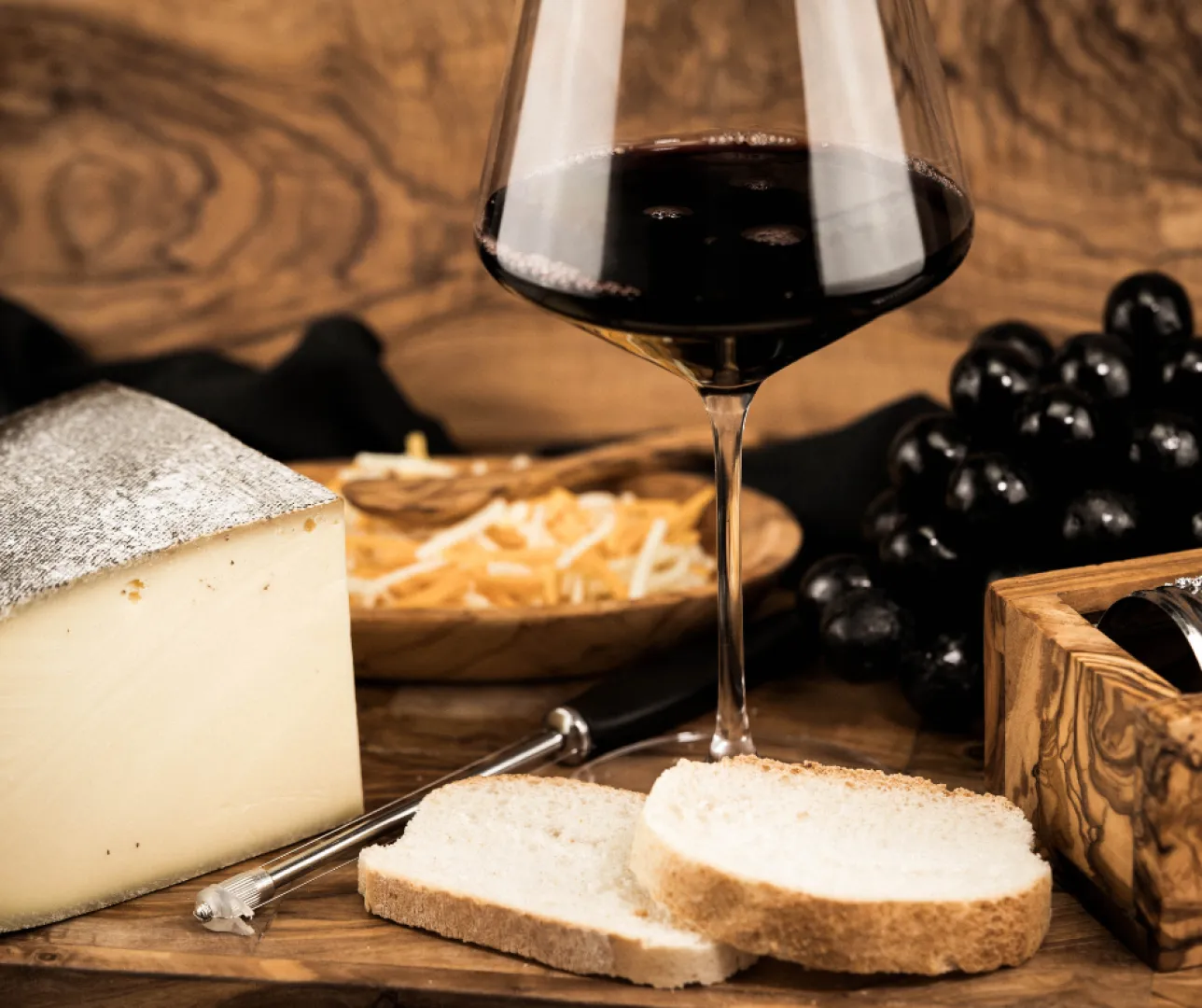
A Guide to Food and Wine Pairing
November 29, 2024

Food and wine pairing is an art that enhances the dining experience, transforming a meal into a memorable occasion. Understanding how to pair food with the right wine can elevate flavors, create balance, and even highlight the unique characteristics of both the dish and the beverage.
This guide will walk you through the basics of food and wine pairing, providing you with the essential knowledge to impress your guests, simply enjoy a meal at home, or fully indulge in the luxury setting of restaurants like Gordon Ramsay Bar & Grill & Wolfgang’s Steakhouse.
Steps to Food and Wine Pairing
Learn the difference between congruent vs. contrasting pairing.
Congruent pairings involve matching similar flavors that enhance each other, such as pairing a buttery Chardonnay with creamy pasta. In contrast, contrasting pairings combine different flavors that balance each other out, like serving a sweet Riesling with spicy Asian cuisine to temper the heat.
Identify the basic tastes in food and wine.
Understanding basic tastes is crucial for effective pairing, which we will all go through below.
Basic Tastes in Food
- Sweet: Found in desserts and certain fruits.
- Salty: Present in cured meats and cheeses.
- Sour: Acidity from citrus or vinegar-based dishes.
- Bitter: Common in dark greens and certain spices.
- Umami: Savory taste from ingredients like mushrooms or aged cheeses.
Basic Tastes in Wine
- Sweetness: Varies from dry to dessert wines.
- Acidity: Provides freshness; higher acidity wines pair well with fatty foods.
- Bitterness: Tannin, a bitter compound found in red wines that can soften with rich meats.
Consider the intensity of food and wine.
When considering intensity of food and wine, take note of the following the following:
- Light dishes (e.g., salads) pair best with light wines (e.g., Sauvignon Blanc).
- Rich dishes (e.g., steak) require fuller-bodied wines (e.g., Cabernet Sauvignon).
- Light-bodied wines should accompany lighter foods.
- Bold wines enhance hearty meals without being overwhelmed by flavors.
Make your pairing.
When it comes to actual pairings, here are some examples that you can have as a guide:
Congruent Pairing Examples
- Chardonnay with Creamy Pasta: The creaminess of both wine and dish creates a harmonious experience.
- Cabernet Sauvignon with Grilled Lamb: The robust flavors complement each other beautifully.
Contrasting Pairing Examples
- Riesling with Spicy Thai Curry: The sweetness of Riesling balances out the heat from the curry.
- Sparkling Wine with Fried Foods: The acidity cuts through the fat, refreshing the palate after each bite.
Tips for Food and Wine Pairing

Here are five quick tips to enhance your food and wine pairing skills:
- Match weight with weight: Pair light wines with light dishes and robust wines with hearty meals.
- Consider acidity levels: Higher acidity wines work well with fatty foods. They cleanse the palate effectively.
- Balance sweetness and spice: Sweet wines can temper spicy dishes, creating a balanced flavor profile.
- Experiment with textures: Creamy dishes pair well with creamy wines, while crispy foods work well with sparkling options.
- Trust your palate: Ultimately, personal preference plays a significant role. Don’t hesitate to try unconventional pairings.
Final Thoughts
Food and wine pairing is an exciting journey that combines science, art, and personal taste. By understanding basic principles such as congruent versus contrasting pairings, recognizing flavor profiles, and considering intensity levels, you can create delightful combinations that elevate any meal. Whether you are hosting a dinner party or enjoying a quiet evening at home, mastering these pairing techniques will undoubtedly enhance your culinary experiences. Remember to experiment and trust your palate—there are no strict rules when it comes to enjoying good food and wine together!